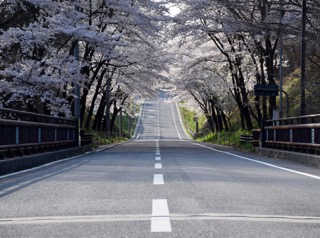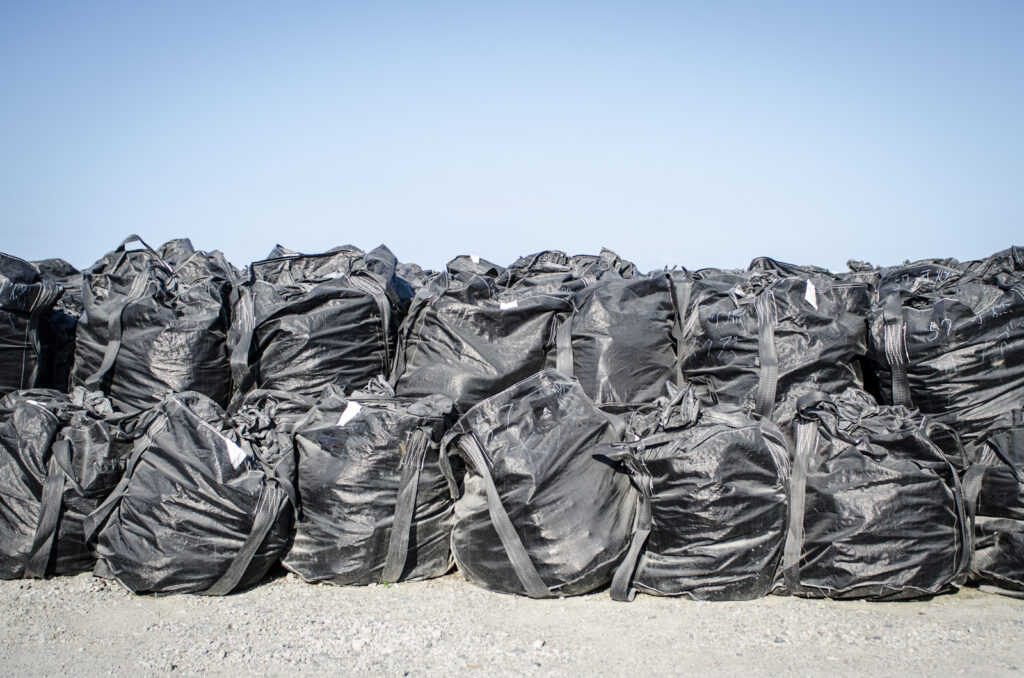Dr Liz Maly, Assistant Professor in the International Research institute of Disaster Science (IRIDeS), Tohoku University
On March 11, 2011, the 9.0 magnitude Great East Japan Earthquake (GEJE) unleashed a massive tsunami devastating over 500 square kilometers of Japan’s northeast Tohoku coast. This region has experienced tsunamis every 30-40 years, but the size and impact of the waves of the 3.11 tsunami vastly exceeded any in recent memory or predictions. The tsunami swallowed buildings and places thought to be safe, killing more than 18,000 people and reducing entire communities to rubble. Damage to the Tokyo Electric Power Company (TEPCO) Fukushima Daiichi Nuclear Power Plant on the coastline of Fukushima Prefecture caused the most serious nuclear accident since Chernobyl—a nuclear meltdown which TEPCO and government officials did not publicly admit until almost 5 years later.
Over 1,000,000 house were destroyed or damaged. In the days that followed, 470,000 people evacuated to school gymnasiums or other facilities, as aftershocks and blackouts continued and cleanup efforts began. In the following months, disaster survivors moved into various temporary housing provided by government support. Five years later, 174,000 people are still displaced, living interim housing, including 99,000 from Fukushima.

For those fleeing nuclear radiation, evacuation and displacement is more complicated. In the days after 3.11, the evacuation zone around the NPP was increased to a 20km radius; people within 30km were ordered to stay inside and prepare to evacuate if necessary. However, the radioactive plume was carried further northwest by wind and rain on March 15th. Although information about the direction of the fallout was available from SPEEDI (the System for Prediction of Environment Emergency Dose Information), it was not made public until March 23, too late for people unaware they were in or evacuating directly into the path of the highest amounts of radiation.
For those fleeing nuclear radiation, evacuation and displacement is more complicated.
People from areas near the NPP struggled with evacuation decisions amidst a lack of information. Some towns ordered evacuation following government directives; others outside designated areas ordered evacuation independently. Still areas were not evacuated until weeks later. Some towns’ residents evacuated collectively; others scattered to various locations inside and outside Fukushima Prefecture. Most moved multiple times. So-called “voluntary evacuees” made their own decisions to evacuate from areas officially deemed “safe.” Elderly people, especially those in nursing/care facilities, suffered severely; more people from Fukushima died as a result of physical and emotional stress related to evacuation and displacement than directly from earthquake or tsunami impact.
More people from Fukushima died as a result of physical and emotional stress related to evacuation and displacement than directly from earthquake or tsunami impact.
Restricted areas were later categorized into three zones based on contamination and possibility of residents’ return. Entry is forbidden to the most severely contaminated, euphemistically named “difficult to return” zone 1. In “residence restricted” zone 2, daytime visits are allowed. In zone 3, optimistically designated “preparing to lift evacuation orders,” daytime entry and business activities are allowed. Contamination levels are based on air samples from point sources; some municipalities include multiple zones, which have been revised several times.
Decontamination, the government’s primary measure for reducing the amount of radioactive material, involves cleaning house roofs, etc., and removing natural materials and a layer of topsoil, which is collected in black plastic bags, continuously piling up in growing storage areas.
While the promise of decontamination is every area can be made safe, there are limits.
For example, there is no way to decontaminate forested mountains; every rainfall carries material to nearby communities, in effect re-contaminating them. Government plans rely on the underlying logic of a one-track plan for the future of contaminated towns: decontamination leads to lifting evacuation orders, then residents will move back. Based on level of contamination and speed of decontamination, the progress on this timeline towards its singular goal is shortened or extended.
Lifted restrictions mean people are allowed to move back, not that they will. In September 2015 restrictions were lifted for Naraha Town; 4 months later, only 6% of former residents moved back. Long term impacts of radiation exposure in Fukushima will not be known for years. But regardless of decontamination efforts and assurances of “safety,” many people will chose not to return, especially parents unwilling to risk children’s health. Conclusions about what areas are actually safe, made on a household or individual basis, also cause rifts within families such as “atomic divorce.” However, some people desperately want to move back, primarily elderly residents less concerned about long term health effects. As Japan is already facing a national demographic crises of an aging, shrinking population, the long-term future of these towns is uncertain at best.
Some people desperately want to move back, primarily elderly residents less concerned about long term health effects.
Japanese disaster recovery policies strongly support a one-track ‘hometown recovery’ approach. Local governments have the main responsibility for post-disaster recovery planning (and other disaster management activities). With national funding, Tohoku’s local municipalities have created and are implementing recovery plans. Varying by town, common goals include bringing residents back and helping rebuild homes and lives. Temporary housing, also government-supported, is intended as an interim support until people can go back to new houses in old hometowns; the timeline to move out of temporary housing for those in Fukushima is longer, and their future is unclear. For permanent housing reconstruction, support options include provision of access to lots for private housing reconstruction, and public housing for those unable to rebuild on their own. Fukushima Prefecture is building public housing within the prefecture for residents from contaminated area. However, the main projects supporting residential relocation for rebuilding private houses on individual lots away from coastal areas, happening throughout the tsunami-affected area at a scale never before seen in Japan, limit relocation within single municipalities.
For towns affected by the nuclear accident, the recovery planning process has a vast internal contradiction: recovery plans and policies focus exclusively on rebuilding hometowns, but some towns will not be inhabitable for many years, and in others the majority of residents don’t want to return. Existing recovery policies don’t have a way to deal with relocating partial or entire towns. Several contaminated municipalities have established temporary town halls within other towns. But it is difficult for towns to consider a recovery plan that dissolves the town itself.
How can you put a price on the loss of a house, livelihood, and community?
While displaced, “official” evacuees (those from designated evacuation areas) receive compensation payments from TEPCO (actually the Japanese government, since TEPCO was nationalized). Although these are large sums of money, the real question is not if the amount is enough, but how can you put a price on the loss of a house, livelihood, and community? Compensation payments to nuclear evacuees can’t bring back what was lost.
Japan has well-established disaster recovery policies based on social welfare support for survivors. Yet even with a sizable national disaster recovery budget and governance experience, current policies can not adequately address the actual challenges for recovering the lives of nuclear evacuees and their contaminated hometowns. Beyond the disruptions of lives and communities, the cleanup and full decommissioning of the NPP will take decades, and leave a site that will be contaminated for a very long time.
Even with highly developed disaster preparations, such as the case in Japan, it is impossible to reduce all risk from natural disasters. Yet even if a nuclear accident is caused because of a natural hazard, it is in fact a man-made disaster. Everything possible should be done to prevent another nuclear accident, including decommissioning reactors; in Japan many are located near earthquake faults or coastal areas.
Japan is the only county whose people have been victims of both an atomic bombing and a massive nuclear accident. Beyond horrendous experiences of bomb survivors in Hiroshima and Nagasaki, their children and grandchildren suffered stigma and discrimination (sadly, evacuees from Fukushima have also faced discrimination). The experience of having been attacked by atomic bombs did not stop development and promotion of nuclear power in Japan, strongly supported by government. After the Fukushima Daichi accident, there was a massive swell of popular anti-nuclear opposition, and operation of all 44 active nuclear reactors in Japan was stopped. However, in August 2015, despite residents’ strong opposition, the first nuclear reactor restarted operation at the Sendai Nuclear Power Plant in Japan’s southernmost island, Kyushu.
Japan is the only county whose people have been victims of both an atomic bombing and a massive nuclear accident.
On April 14, 2016, a large earthquake struck Kumamoto City, in Kyushu, followed by a larger M7.3 quake in the early hours of April 16th; strong aftershocks continuing for a week.
As of April 20, 48 people had been confirmed dead, included several people who died during evacuation, and more than 100,000 people had evacuated from damaged homes or those in danger due to aftershocks. Heavy rains caused landslides, sections of highways were destroyed and operation of bullet trains were suspended, making it difficult to get supplies to evacuees, and any potential evacuation from a nuclear accident impossible. Despite predictions that large quakes will continue, potentially triggering more landslides, and vocal calls from inside and outside Japan, the Japanese Nuclear Authority refuses to stop the reactors, which continue to operate nearby. It seems not enough has changed since 3.11; not only do problems of Fukushima’s nuclear evacuees from remain unsolved, they are in real danger of being recreated.
Dr Liz Maly’s work centers on disaster recovery, housing reconstruction and community-based recovery planning. She has previously researched post-Katrina and post-Sandy housing recovery and land use policy in the USA, as well as the Central Java Earthquake in Indonesia. Dr Maly continues to work on long-term community recovery for groups impacted by the 2011 Great East Japan Earthquake. Her website ‘Recovering Tohoku’ is highly recommended, and you can follow her on twitter here.
Cover Image: Bags of contaminated material seen near the town of Odaka on the edge of the Fukushima Exclusion Zone. Photograph by Thom Davies.
